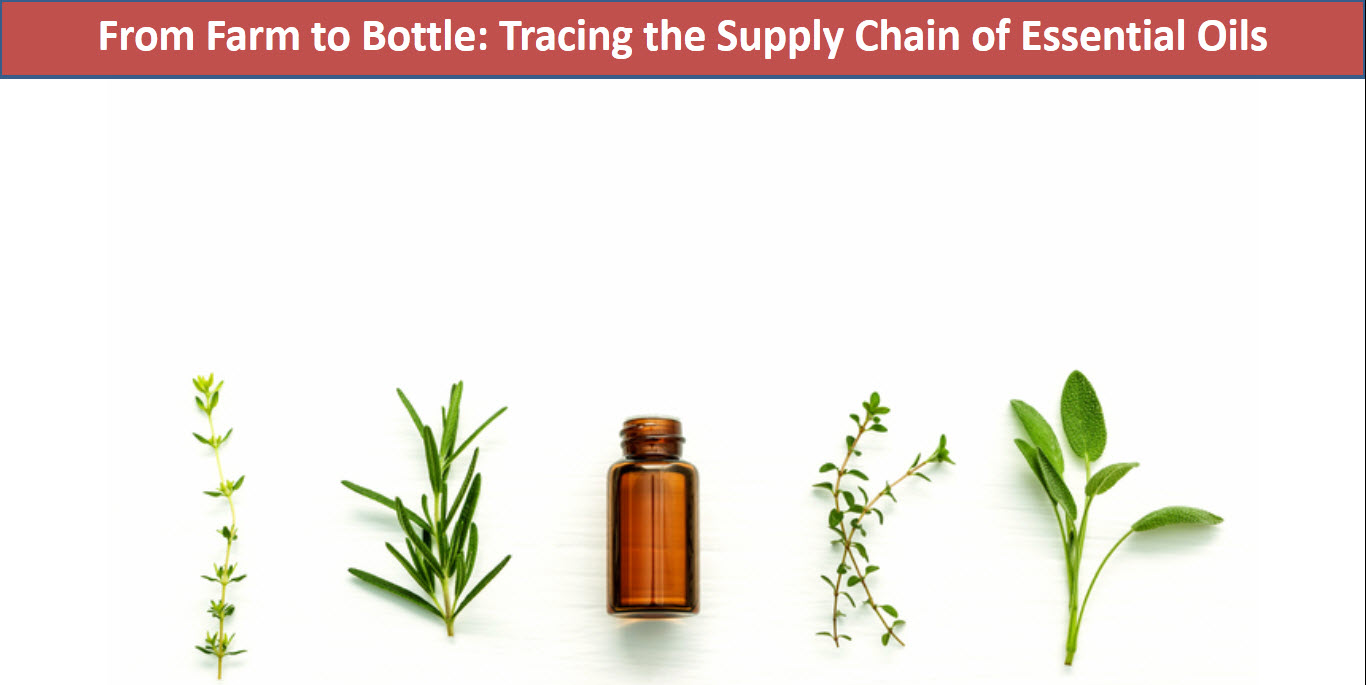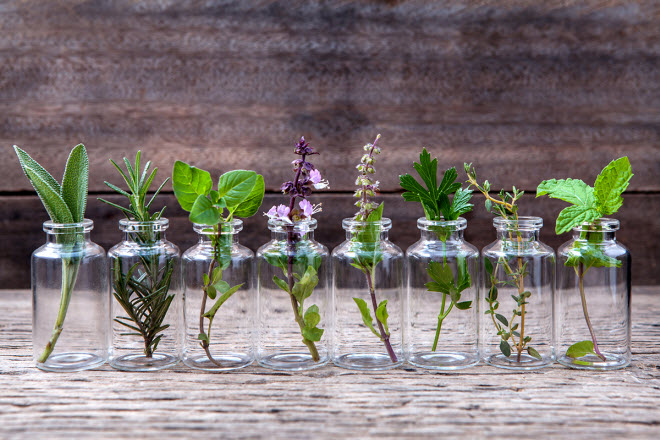Blogs

From Farm to Bottle: Tracing the Supply Chain of Essential Oils
The journey of essential oils from their source to the end consumer is a fascinating and intricate process that involves multiple steps and players. This article will describe the journey of essential oils, from cultivation to manufacturing, and finally, to the hands of the end consumer.
Cultivation and Harvesting
The journey of essential oils begins on farms and plantations around the world, where aromatic plants are cultivated. These plants can include lavender, peppermint, eucalyptus, and countless others, each with unique aromatic properties. The cultivation process requires careful attention to factors like soil quality, climate, and proper farming practices to yield high-quality raw materials.
When the plants reach maturity, they are carefully harvested at the optimal time to maximize the concentration of essential oil compounds. The harvesting method depends on the plant; some are handpicked, while others are mechanically harvested.
Extraction
Once harvested, the plant material undergoes extraction to isolate the essential oil. There are several methods for extraction, including:
Steam Distillation:
One of the most common methods, it involves passing steam through the plant material, causing the essential oils to vaporize and then condense into liquid form.
Cold Pressing:
This method is used for citrus oils, where the oil is mechanically pressed from the rind of the fruit.
Solvent Extraction:
In this process, solvents are used to extract essential oils from delicate plant materials. The solvent is later removed, leaving behind the oil.
CO2 Extraction:
Supercritical carbon dioxide is used to extract essential oils without heat or solvents, preserving their purity.

Quality Control and Testing
After extraction, the essential oil undergoes rigorous quality control and testing. This step ensures that the oil meets established standards for purity, composition, and quality. Gas chromatography and mass spectrometry are common techniques used to analyze the chemical composition of the oil.
Bottling and Packaging
Once the essential oil passes quality control, it is prepared for packaging. The oil is carefully bottled in dark or amber glass bottles to protect it from light, which can degrade its quality. Proper sealing is crucial to prevent any contaminants from entering the bottle.
Distribution
From the manufacturing facility, the essential oils are distributed to various markets, both domestic and international. This step involves logistics, including transportation and warehousing, to ensure that the oils reach their intended destinations efficiently and safely.
Retail
Essential oils are typically sold through various retail channels, including health food stores, wellness centers, online marketplaces, and specialized aromatherapy shops. Consumers can purchase individual essential oils or blends for various purposes, such as aromatherapy, massage, or skincare.
Consumer Use
The final destination of essential oils is the hands of the end consumer. Consumers use essential oils for a wide range of applications, including:
- Aromatherapy
- Diffusion in homes and offices
- Massage therapy
- Personal care and skincare
- Homemade cleaning products
- Natural remedies for various ailments
Conclusion
The journey of essential oils, from farm to bottle, is a complex and carefully managed process. It involves the cultivation of aromatic plants, precise extraction methods, quality control measures, and distribution to reach consumers worldwide. Essential oils have found their place in numerous aspects of our lives, offering not only delightful aromas but also therapeutic and wellness benefits. Understanding this journey helps us appreciate the value and quality of the essential oils we use in our daily lives.

